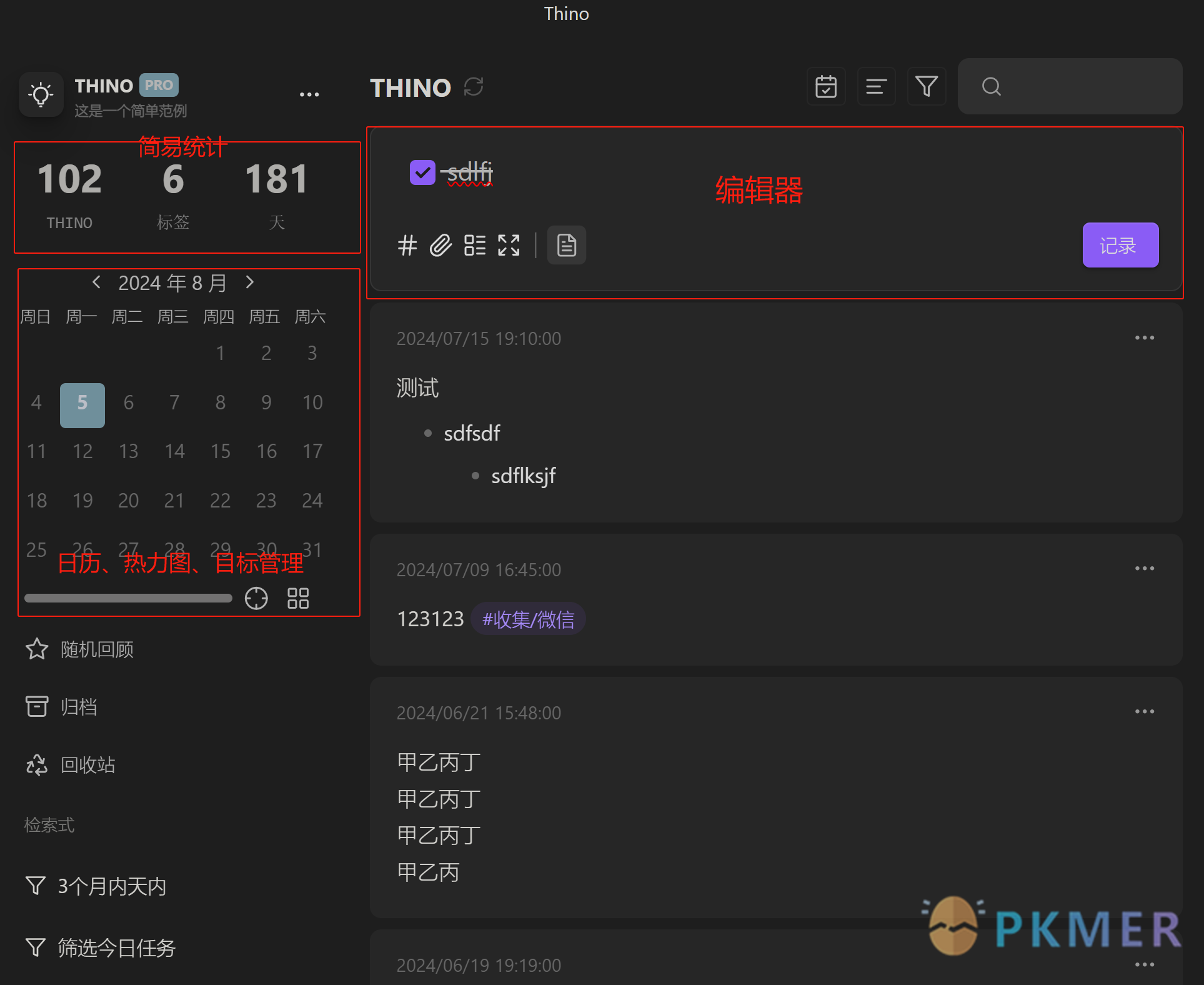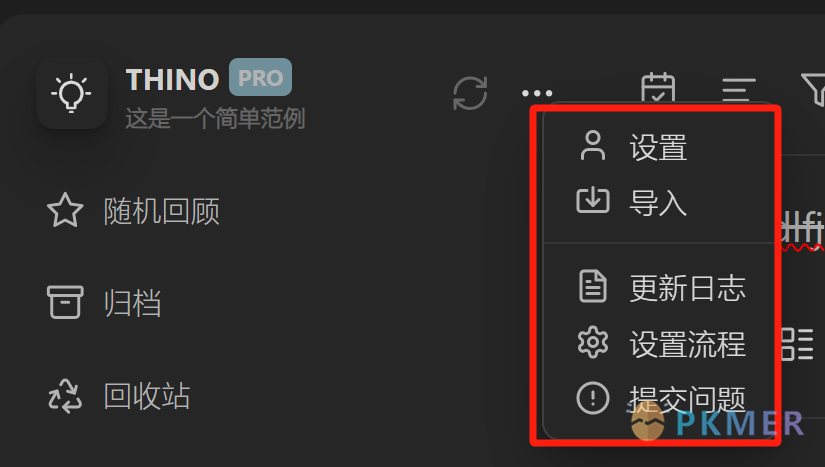Thino Basic Tutorial
Thino Basic Tutorial
When you encounter doubts about basic functions while using Thino, this tutorial focuses on detailed explanations of all the interface elements that users can touch, while some hidden functions will be explained in the Advanced Usage Tutorial.
Thino’s current feature & service system is as follows, and users can refer to their own needs to make choices.
- Thino Basic version which based on Obsidian Memos before,Refer: 05_About Thino
- Thino Pro version: Added a series of features
- Multi layout【Released】
- Calendar heatmap/Daily progress bar【Released】
- Inline filter【Released】
- Time mark mode【Released】
- Live Preview function enhancement【Released】
- Random review【Released】
- Local Thino server【Released】
- Global capture【Released】
- Multiple Thino parsing sources【Released】
- List【Released】
- Chat【Released】
- Moments【Released】
- Waterfall【Released】
- Calendar【Released】
- Table
- And so on…
- Thino Web 服务
- Including WeChat sending to Thino plugin【Released】
- Remote synchronization of Thino【Released】
- Independent Web version of Thino【Thino Pro users can currently enjoy a free trial. After the web pricing is released, they can choose whether to renew the subscription on their own】
The outline of each function is as follows, with a brief introduction to most of the functions:
- Thino Tag
- Thino Archive
- Thino Review
- Thino Trash Bin
- Thino Filters
- Thino Card
- Thino Card Menu
- Thino Reference
- Thino Multi Layout
- Thino Commands
- Thino Heatmap
- Thino Editor
- Thino Search
- Thino Image Preview
- Thino Share
Basic interface
Classic View

Modern View

Settings
Thino places most of its custom and core function settings in the plugin settings, unlike other plugins. Thino not only allows you to access settings by entering the third-party plugin list in Obsidian and clicking the settings button. Thino provides more shortcuts for configuration.
You can access the settings by clicking on the indicated location in the image or by clicking on the Thino icon directly, without having to navigate through Obsidian settings
